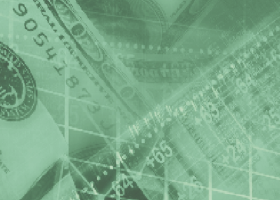Although Japanese GDP growth more than doubled expectations in the third quarter, USD/JPY rose as high as 108.
The rally may have stopped right below the 50 and 100-period SMA cross
on the weekly chart (see below) but the pair’s uptrend is far from
over. Trump’s victory was a game changer for the dollar and stocks.
These fundamental forces have not run their course and for this reason
the dollar’s rally isn’t over. Hitting 110 is not only possible but
likely for USD/JPY but rather than chase the move it may be smarter to
wait for a pullback towards 107. U.S. retail sales are scheduled for
release tomorrow and it’s a tough call because while wages are on the
rise, confidence has been low, employment growth slow and gas prices
have fallen.

The biggest story today was the sell-off in EUR/USD. Trump’s victory in the U.S. has been viewed as a victory for nationalism and in the past few days, support for Italy’s referendum on Senate reform has plunged sharply. The NO vote is now leading and the fear is that it could lead to resignation of Prime Minister Renzi and a possible Italian – exit from the European Union. Trump’s win also boosted the chance for Marine Le Pen, France’s far-right leader to become their next President. As our colleague Boris Schlossberg wrote Donald Trump’s victory “has emboldened the anti-EU factions in Italian politics and it appears that the very same political impulses that gave birth to Brexit and Mr. Trump’s victory are now dominating popular will in Italy as well. Italy is the third largest economy in the EU and the risk of its possible exit from the union is starting to send jitters through the market. The EUR/USD has now lost 6 big figures in less than a week breaking all of the long term technical support points.” With sentiment now turning decidedly EUR/USD is a sell on rallies for a move to 1.05 especially as the two year German – U.S. yield spread hit a 10 year low. German and Eurozone third quarter GDP numbers are scheduled for release tomorrow followed by the German ZEW survey and Eurozone trade balance.
After rising for 3 straight trading days, sterling finally buckled under
the weight on dollar strength. With no major U.S. or U.K. economic
reports released today, the pullback in GBP/USD was purely a function of
profit taking after a run to 1.2650. Part of the move can
also be attributed to EUR/GBP selling. The currency pair continued to
tip lower and has not seen a rally in 9 trading days. The calendar is
filled with market moving U.K. data this week starting with tomorrow’s
inflation report. Given the steep decline in sterling in October,
inflation is expected to rise. The Bank of England has already
expressed these concerns by significantly boosting their 2017 CPI
forecasts. Later in the week we have UK employment and retail sales
numbers scheduled for release and healthy numbers are expected. Bank of
Governor Carney, Shafik and Saunders also speak tomorrow – their
continued confidence in the economy and concerns about rising inflation
would extend gains for GBP/USD but if the emphasis is on uncertainty, it
will hurt the currency.
It was a relatively quiet day for commodity currencies. The Australian
dollar traded slightly higher versus the greenback while the Canadian
and New Zealand dollars moved lower. Stronger than expected
services activity in New Zealand failed to lift the currency even though
the PMI index jumped from 54.2 to 56.3. Retail sales are due later
this week and we expect healthy spending numbers. The resilience of the
Australian dollar can be attributed to this evening’s release of the
RBA minutes. When the central bank last met they expressed optimism
about the economy and this same sentiment is likely to be evident in the
minutes given Governor Lowe’s previous upbeat economic growth outlook.
Chinese data was softer than expected – industrial production registered
an increase of 6.1%, missing the 6.2% forecast. Retail sales also
missed expectations by posting a 10% increase when a 10.7% rise was
expected. USD/CAD continued to power higher although the gains have
fizzled a bit with oil prices turning positive by the end of the day.
Canada’s existing home sales and house price index reports are scheduled
for release on Tuesday.


